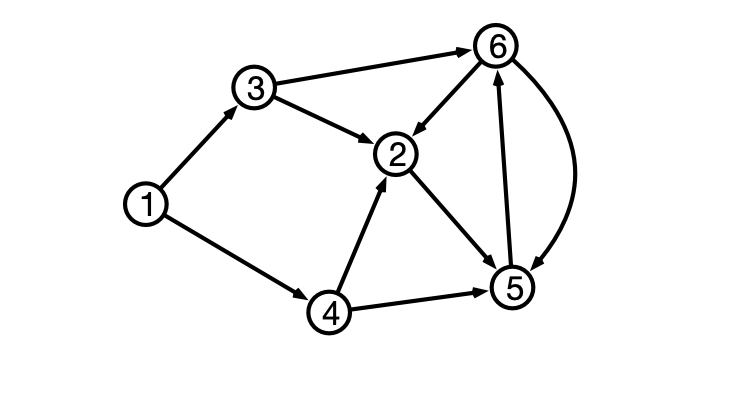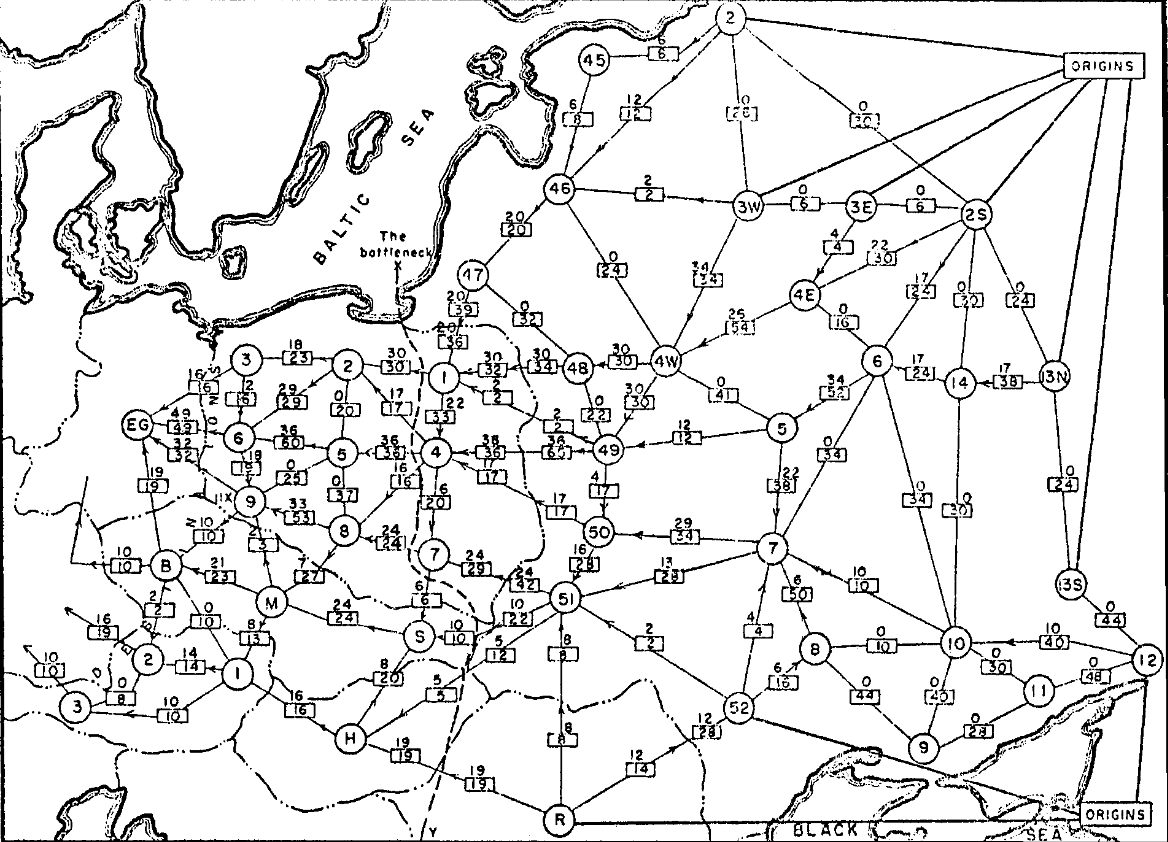Lecture 27: Shortest Paths, Revisited
$ \def\opt{ {\mathrm{opt}} } $
COSC 311 Algorithms, Fall 2022
Announcements
- HW 05 Due this Friday
- Midterm 2 Wednesday 11/16
- in class
- focus on material since last midterm up to this Friday
- algorithmic paradigms:
- divide and conquer
- greedy
- dynamic programming
- network flow
- mixture of computational and algorithm design questions
- details forthcoming
Directed Graphs and Paths

Representing Directed Graphs
Adjacency List
- $v$’s neighbors are outgoing neighbors

Single Source Shortest Paths
Input:
- (Directed) graph $G = (V, E)$, edge weights $w$
- Starting vertex $u$
Output:
- $d(v) = $ distance from $u$ to $v$ for every vertex $v$
- distance is length of shortest directed path from $u$ to $v$
- length is sum of edge weights of path
Previous Algorithms
- Breadth-first Search (BFS)
- solves SSSP when all edge weights are $1$
- Dijkstra’s Algorithm
- solves SSSP when all edge weights are $\geq 0$
Question. What if edge weights can be negative?
Example 1
Question 1. Why can Dijkstra fail when edge weights can be negative?
Example 2
Question 2. Why might shortest paths not exist when edge weights can be negative?
Assumption
Assume. $G$ does not contain any negative weight cycles.
Claim. $G$ a graph with $n$ vertices, $u, v$ vertices in $G$. If $G$ does not contain negative weight cycles, then the shortest (weighted) path from $u$ to $v$ contains at most $n-1$ edges.
Why?
Shortest Paths Again
Suppose shortest path from $u$ to $x$ contains $j$ hops.
- $v$ is $x$’s “parent” along path
- $d(u, x) = d(u, v) + w(v, x)$
- shortest path from $u$ to $v$ has $j-1$ hops
Dynamic Programming Approach
Idea. For each vertex $v$ and each $j = 1, 2, \ldots, n-1$ compute $d_j(u, v) = $ length of shortest path from $u$ to $v$ with at most $j$ hops.
- Note $d(u, v) = d_{n-1}(u, v)$.
Questions
Question 1. How to initialize $d_0(u, v)$?
Question 2. Given $d_j(u, v)$ for all v, how to find $d_{j+1}(u, v)$?
Illustration
Bellman-Ford Algorithm
Bellman-Ford(V, E, w, u)
d <- 2d array [0..n-1, 1..n]
for v = 1 to n do d[0, v] <- infinity
d[0, u] <- 0
for j = 1 to n-1 do
for each vertex v in V set d[j, v] <- d[j-1,v]
for each vertex v in V
for each neighbor x of v
d[j, x] <- Min(d[j, x], d[j-1, v] + w[v, x])
return d[n-1]
Running time?
Correctness
Claim. For all $j = 0, 1, \ldots, n-1$ and for all vertices $v$, $d[j, v]$ stores length of shortest path from $u$ to $v$ with $j$ or fewer hops. I.e., $d[j, v] = d_j(v)$
Proof. Induction on $j$.
Base case, $j = 0$.
Inductive Step, $j-1 \implies j$
- suppose $d[j-1, v] = d_{j-1}(v)$ for all $v$
- consider shortest path $P$ of $j$ hops from $u$ to $v$
- let $x$ be penultimate vertex in $P$
- then $d_j(v) = d_{j-1}(x) + w(x, v)$
- by inductive hypothesis, $d_{j-1}(x) = d[j-1,x]$
- therefore in iteration $j$, get $d[j, v] \leq d[j-1,x] + w(x, v) = d_{j-1}(x) + w(x, v) = d_j(v)$
- also have $d[j, v] \geq d_j(v)$ (why?)
- so $d[j, v] = d_j(v)$
Conclusion
If $G$ has no negative weight cycles, then Bellman-Ford solves single source shortest paths in $O(m n)$ time.
Dijkstra vs Bellman-Ford?
Running times:
- Dijkstra: $O(m \log n)$
- Bellman-Ford: $O(m n)$
Why pick Bellman-Ford over Dijkstra?
- Why might Bellman-Ford be preferable even if graph has no negative weight edges?
Bellman-Ford Again
Bellman-Ford(V, E, w, u)
d <- 2d array [0..n-1, 1..n]
for v = 1 to n do d[0, v] <- infinity
d[0, u] <- 0
for j = 1 to n-1 do
for each vertex v in V set d[j, v] <- d[j-1,v]
for each vertex v in V
for each neighbor x of v
d[j, x] <- Min(d[j, x], d[j-1, v] + w[v, x])
return d[n-1]
Next Time: Cold War
Rail Network of Eastern Europe

Networks to Graphs
Modeling the network:
- nodes represent railway junctions
- edges represent rail lines
- weights represent capacities of lines
- capacity indicates tonnage that can cross line per unit time
- proportional to cost of disrupting movement along line
Question 1. How much material can the USSR transport to Western Europe per unit time?
Question 2. What is the cheapest way to disrupt flow of material?
Network Flow
A new interpretation of directed graphs:
- network of (directional) pipes
- weights are capacities
- how much fluid can flow through piper per time
- designated source node $s$
- all edges directed away from $s$
- designated sink or destination node $t$
- all edges directed towards $t$
Question. How much fluid be routed from $s$ to $t$ per unit time?